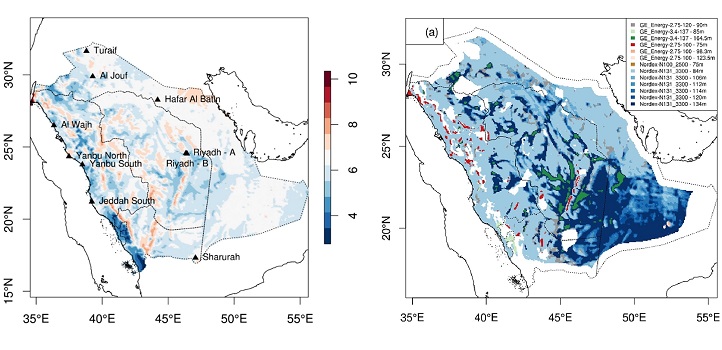© Stockbyte/ Getty Images
A five-year study of wind energy potential in Saudi Arabia has culminated in a comprehensive blueprint for progressing the Kingdom’s national wind energy strategy. Exhaustive high-resolution modeling was combined with a unique set of wind and weather observations and analysis of land-use restrictions, cost and technologies to guide the optimal buildout of wind turbines.
The program was led by KAUST's Marc Genton in close collaboration with atmospheric simulation experts at the University of Notre Dame in the USA. “Through our novel methodology and ad-hoc computer simulations, we have accurately quantified wind energy resources in Saudi Arabia and have provided a detailed plan for a cost-effective implementation of the government’s wind energy target of 16 gigawatts of installed capacity by 2030,” says Genton. “Our work shows that Saudi Arabia is well positioned to become a role model for wind energy development in the Middle East and worldwide.”
The reliable calculation of wind energy resources is a prerequisite for the development of a strong wind energy industry. Although wind energy potential has been rigorously quantified in many developed countries, this critical step remains a major obstacle for many emerging economies due to the lack of widespread wind monitoring data and well-developed high-resolution atmospheric models.

“We spent five years researching the right methodology and the most appropriate simulations and finding suitable ground data,” says Genton. “We also engaged with collaborators at the University of Notre Dame, who had a lot of expertise in simulating atmospheric phenomena at regional scales with computer models. With their simulations and help in developing new methods, we are able to accurately characterize the weather occurring in the atmosphere at spatial scales of up to thousands of kilometers.”
Read the full article


